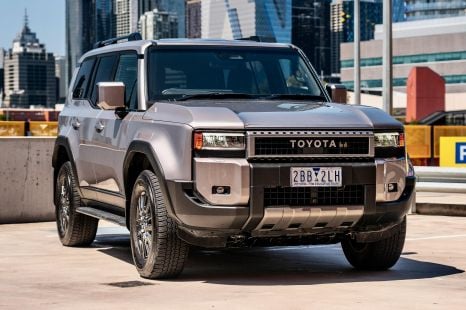

Max Davies
2025 Toyota Prado GXL review
2 Months Ago
It may look unchanged from the outside, but beneath the skin Toyota has extracted more power and torque from its four-cylinder 2021 LandCruiser Prado.
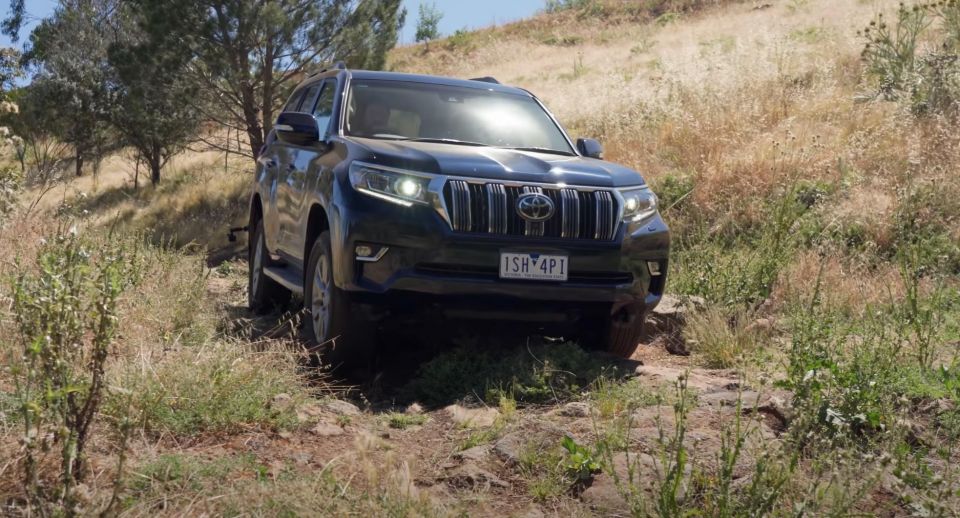
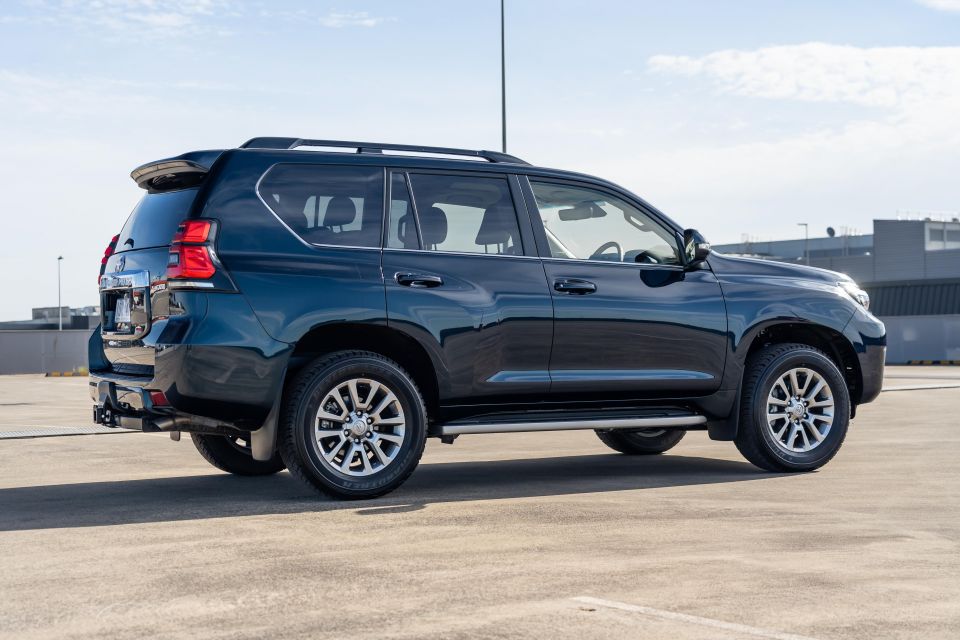

Founder
New from
$54,090
excl. on-roads

Founder
New from
$54,090
excl. on-roads


Founder
New from
$54,090
excl. on-roads

Founder
New from
$54,090
excl. on-roads
Quickly see how this car stacks up against its competition. Select any benchmark to see more details.
Where expert car reviews meet expert car buying – CarExpert gives you trusted advice, personalised service and real savings on your next new car.
You don’t need an advanced degree in astrophysics to know that when Toyota updates an engine in the HiLux and Fortuner, those updates are likely to filter across all other vehicles that share that engine.
So it was no surprise Toyota announced the 2021 Toyota LandCruiser Prado would come with the beefier, more powerful 2.8-litre diesel engine found in the updated Toyota HiLux and Fortuner.
Toyota officially killed the V6 Prado due to low sales in late 2017 and since then it has been offered with a carbon copy of the HiLux’s 2.8-litre four-cylinder diesel engine.
Given the extra kerb weight of the Prado, does the added power and torque under the bonnet help it feel like less of a slug?
The 2021 Toyota LandCruiser Prado range kicks off from $59,840 before on-road costs for the entry-level LandCruiser Prado GX.
Pricing then climbs all the way through to the top-specification model tested here, the LandCruiser Prado Kakadu, which costs $87,030 before on-roads.

There are 10 colours available with all but solid black and white finishes costing an additional $600.
Outside of the base price, there is a no-cost option available for a flat tailgate. This moves the spare tyre from the tailgate to under the rear of the vehicle.
The added convenience comes at the cost of fuel tank capacity, with the 63 litre sub-tank removed to accommodate the spare tyre. Fuel tank capacity reduces from 150 litres to 87 litres.
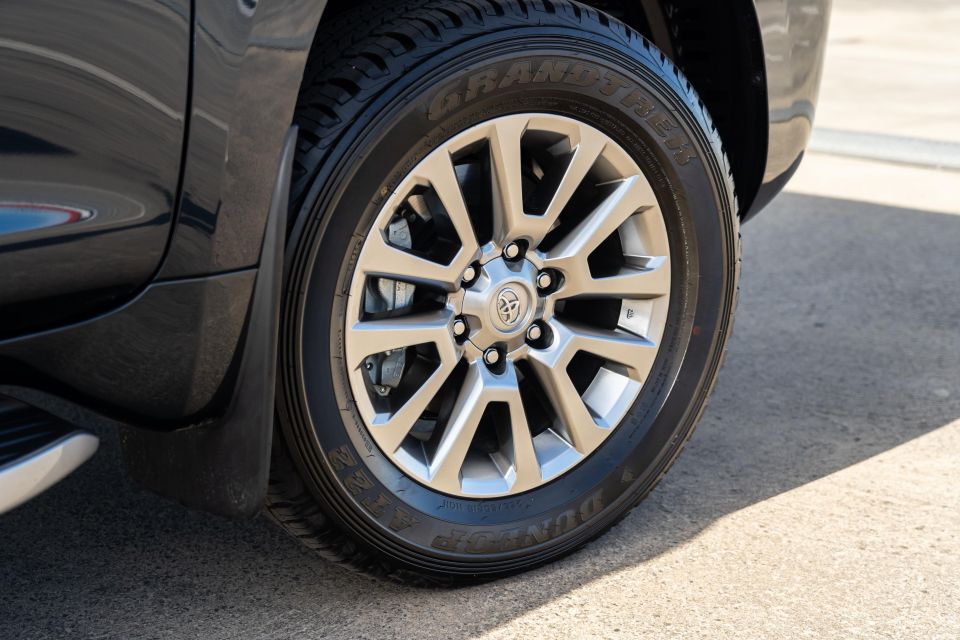
Given it’s the top-specification model, Toyota has thrown the feature book at the Prado Kakadu.
Outside you’ll find 18-inch alloy wheels, automatic LED headlights, LED tail lights, proximity entry and push-button start, height-adjustable suspension on the rear axle, privacy glass, a sunroof, 360-degree cameras and roof rails.
Inside the cabin there are leather seats, electric seat adjustment for the first row, heated seats for the first and second rows, electric steering column adjustment, radar cruise control, AM/FM/DAB+ digital radio, 14-speaker stereo, Apple CarPlay and Android Auto, a centre console fridge, a rear DVD player, and third-row seating.
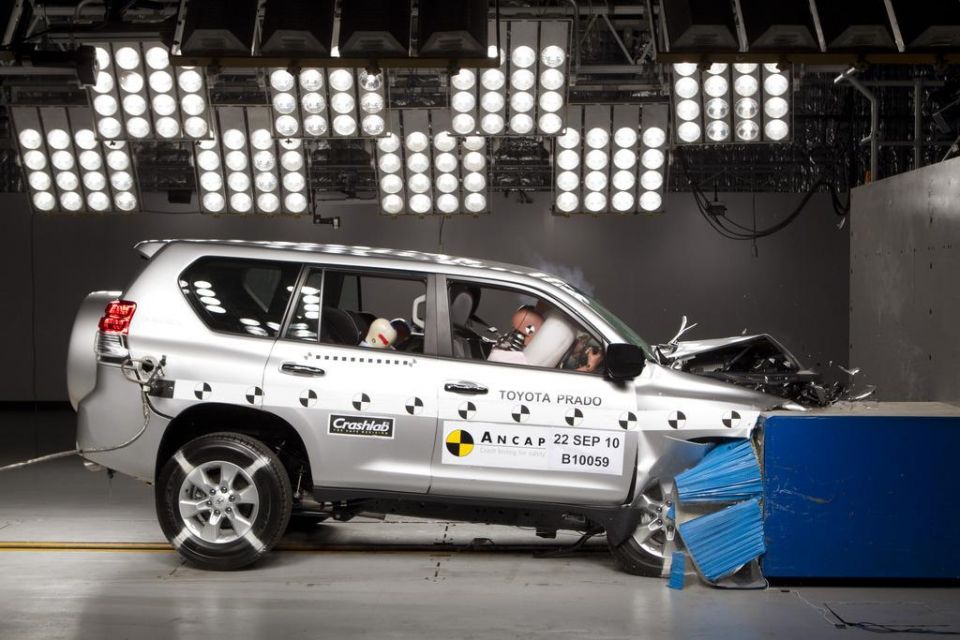
The Toyota LandCruiser Prado has a five-star safety rating based on its original crash test in 2010.
It may seem a little confusing but, because the platform hasn’t changed significantly over that time, the crash test result was reassessed and updated in 2013, and applies to all vehicles sold from August 2013 onwards.
It now comes standard with autonomous emergency braking with pedestrian detection, dual frontal, side chest and side head (curtain) airbags, along with a driver’s knee airbag.
When it was first tested it achieved an overall score of 35.11 out of 37.
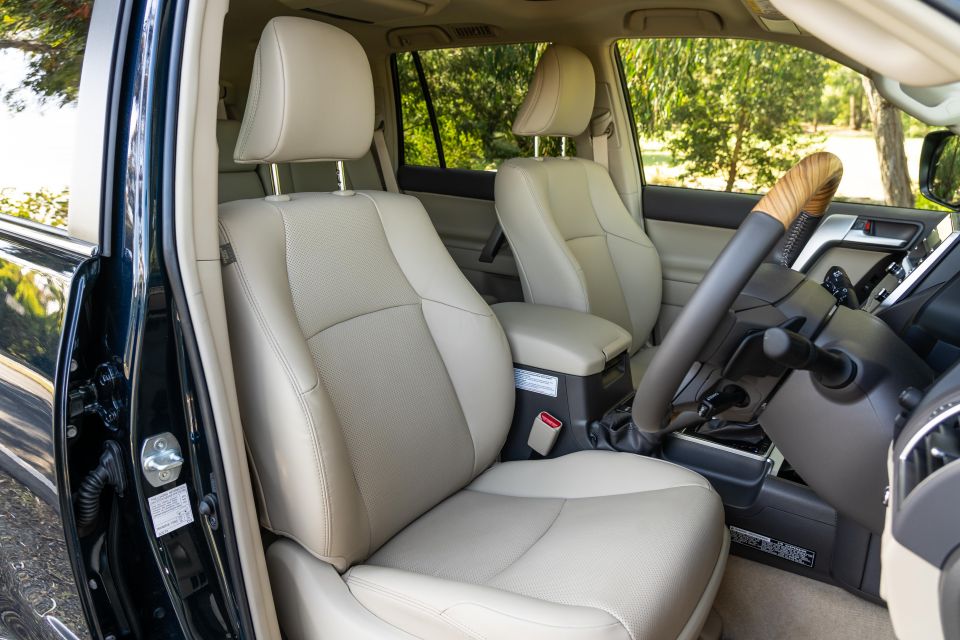
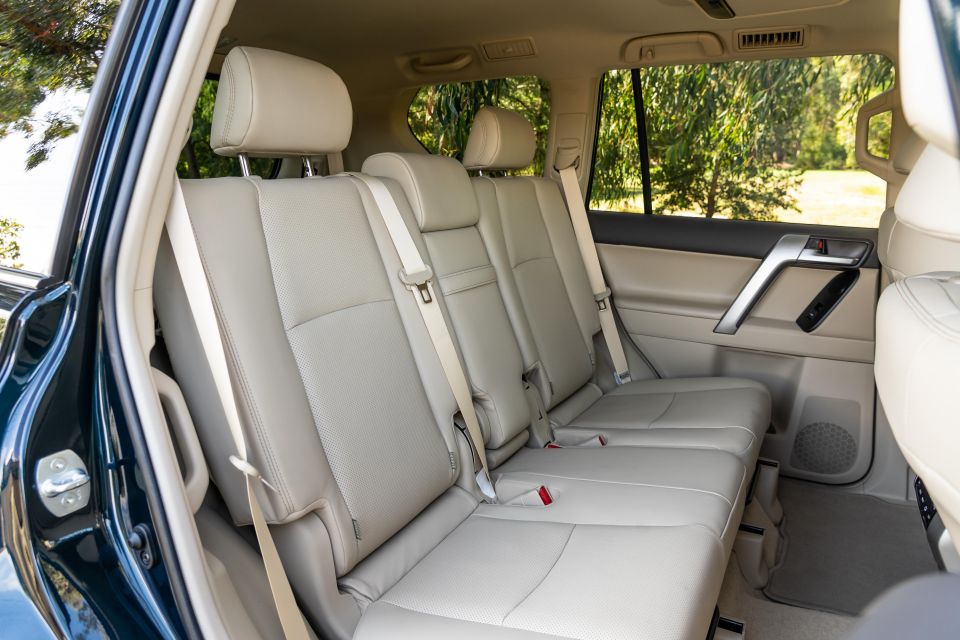

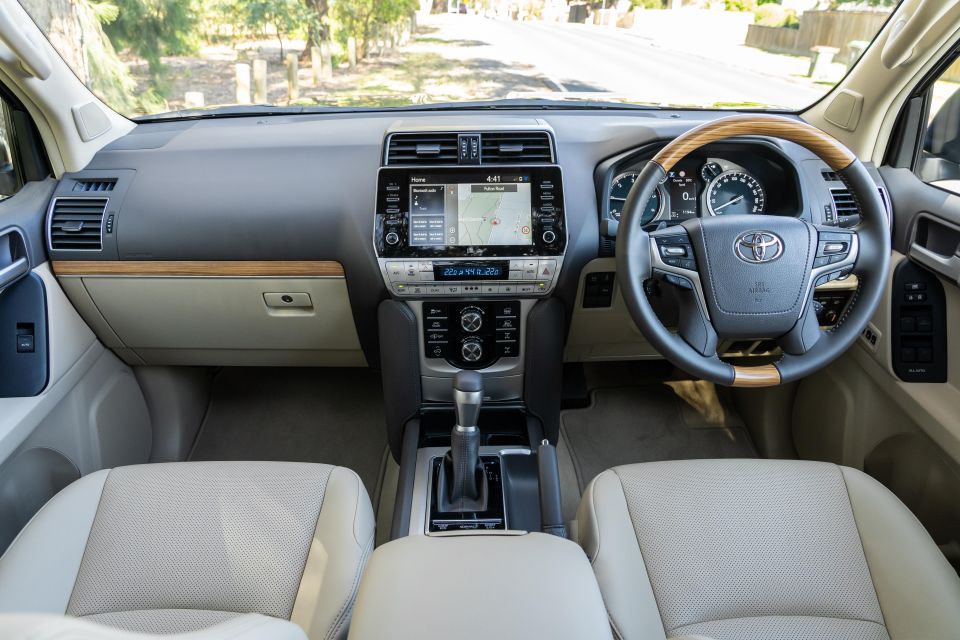
The interior is classic Prado. Woodgrain on the steering wheel, dashboard and doors, expanses of space, a centre stack full of four-wheel drive controls, and a fridge in the centre console.
Visually you won’t spot many differences between the 2021 LandCruiser Prado and the 2019 model. The key differences sit with an updated infotainment system that features different buttons on its side flanks and a new operating system.
The rest of the centre stack is virtually identical with digital automatic climate control screens and a section beneath dedicated to four-wheel drive controls.
The updated infotainment system consists of an 9.0-inch colour display fitted with AM/FM and DAB+ digital radio linked to a 14-speaker JBL branded sound system.

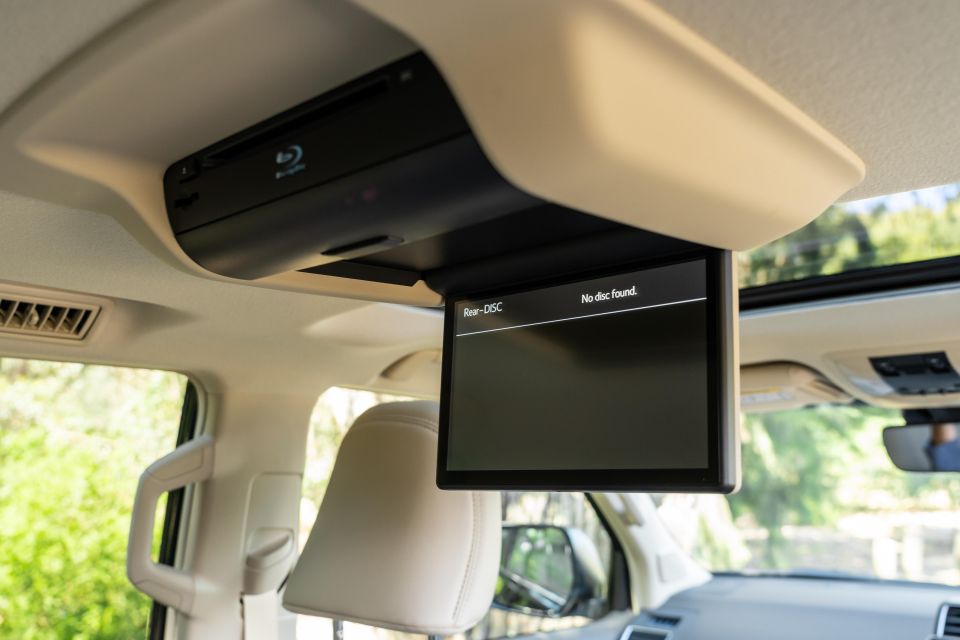
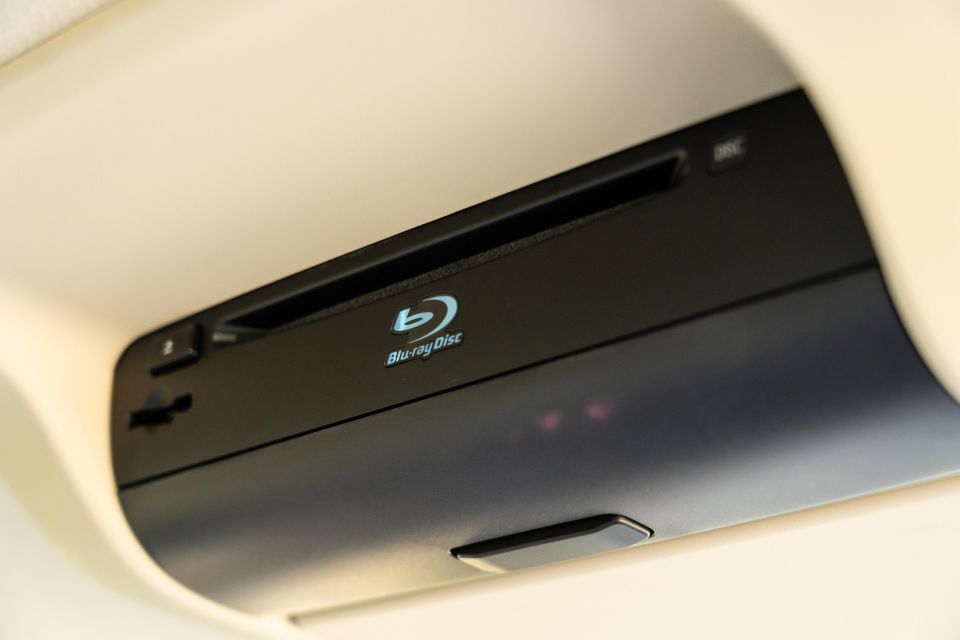
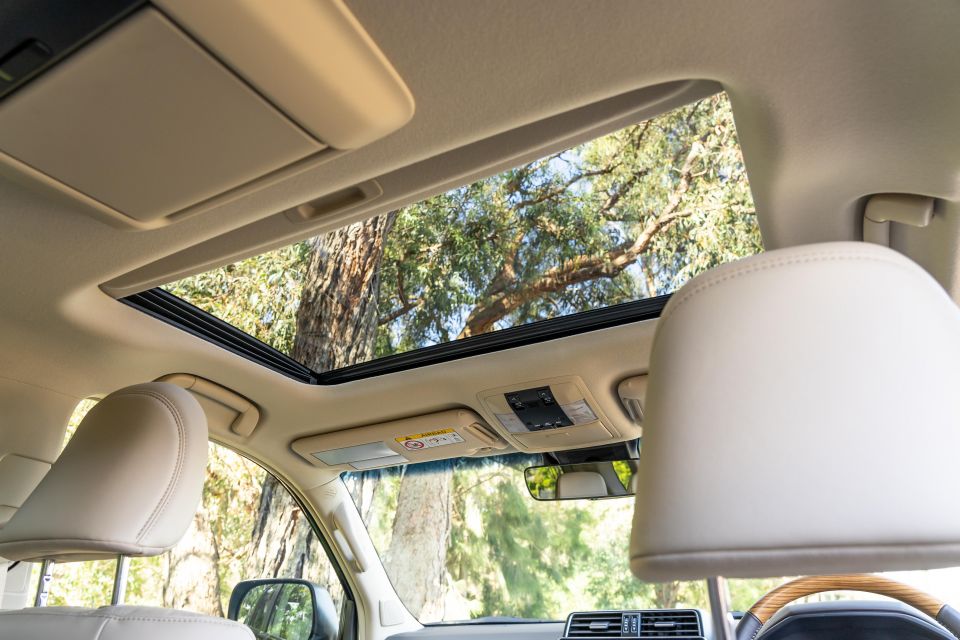
It now includes Apple CarPlay and Android Auto smartphone mirroring technology. It requires a cable and both technologies take up the entire screen. They both work well, but were slightly laggy when we tested them. That goes for the main infotainment interface as well – it can feel a little slow during transitions between screens and during entry of navigation destinations.
Strangely there’s just one USB port in the first row, which means it’s out of action when using smartphone mirroring and you’ll need to find a 12V adaptor to charge other USB devices.
Leg and headroom in the first row is good and creature comforts like heated and cooled seats, plus a fridge in the centre console, make long-distance cruising in the Prado Kakadu a breeze. You’ll hate me for this – but I think the woodgrain looks cool, too.
Knee and headroom in the second row is excellent for adults. Toe room is a little tight and the floor sits a little high so you feel like you’re sitting upright much of the time. Adults to one side, there’s a stack of room in the second row for kids.
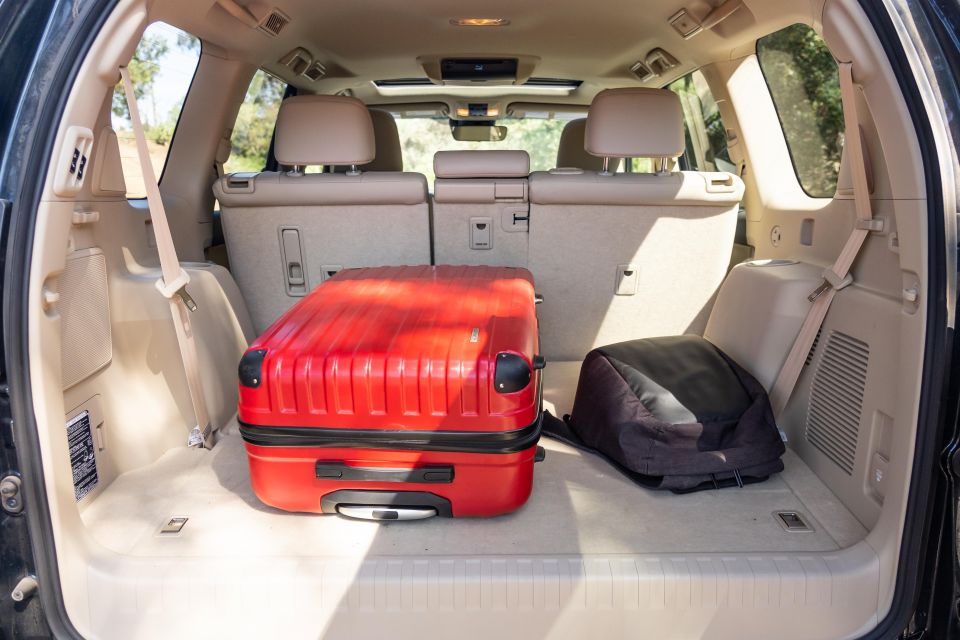
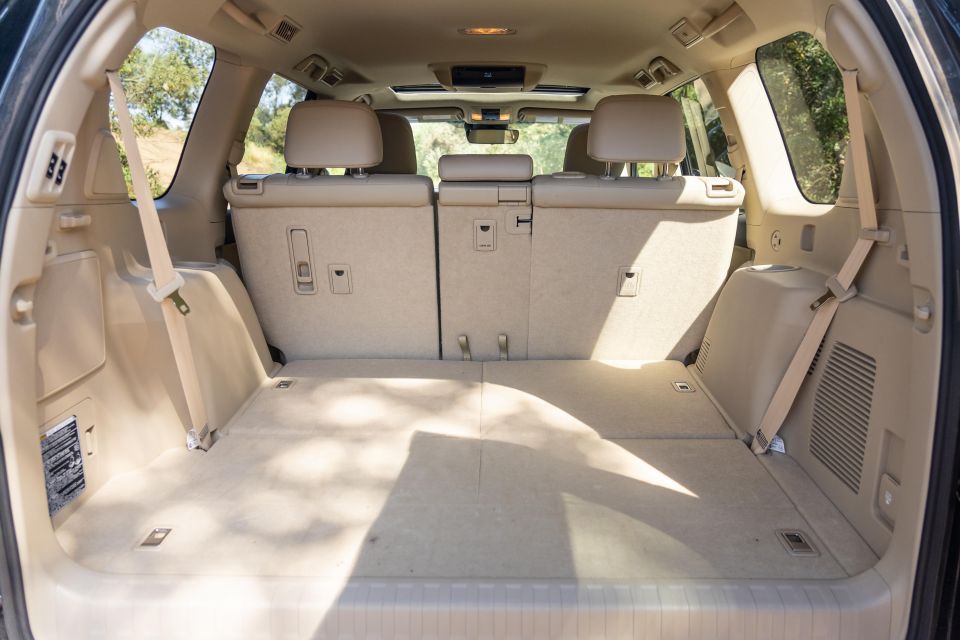
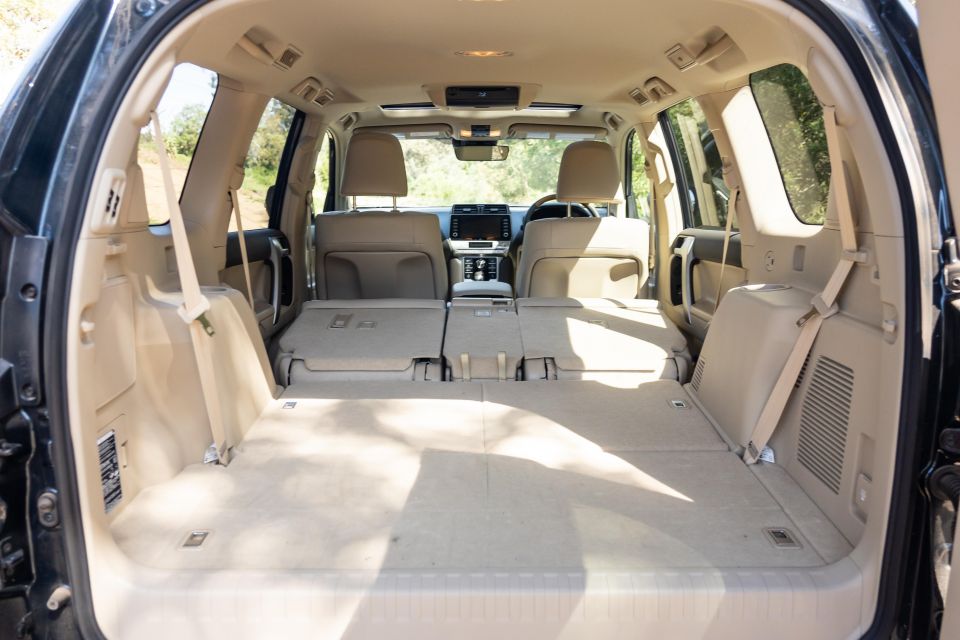
ISOFIX points on the two outboard seats are joined by top tether points for all three seats in the second row.
Access to the third row involves sliding the second row forward and tilting the seat back forwards. The third row can then be electrically lifted into position for access.
There’s ample room in the third row for children, but adults will find the space a little compromised. The second row can be slid forward to accommodate extra room in the third row though, so the space can be customised to afford more fit.
Cargo space comes in at 120 litres behind the third row with the third row erect, 620 litres with the third row folded into the floor and 1833 litres with the second row folded flat. There’s a 230V power outlet in the rear too – very handy if you’re out camping.
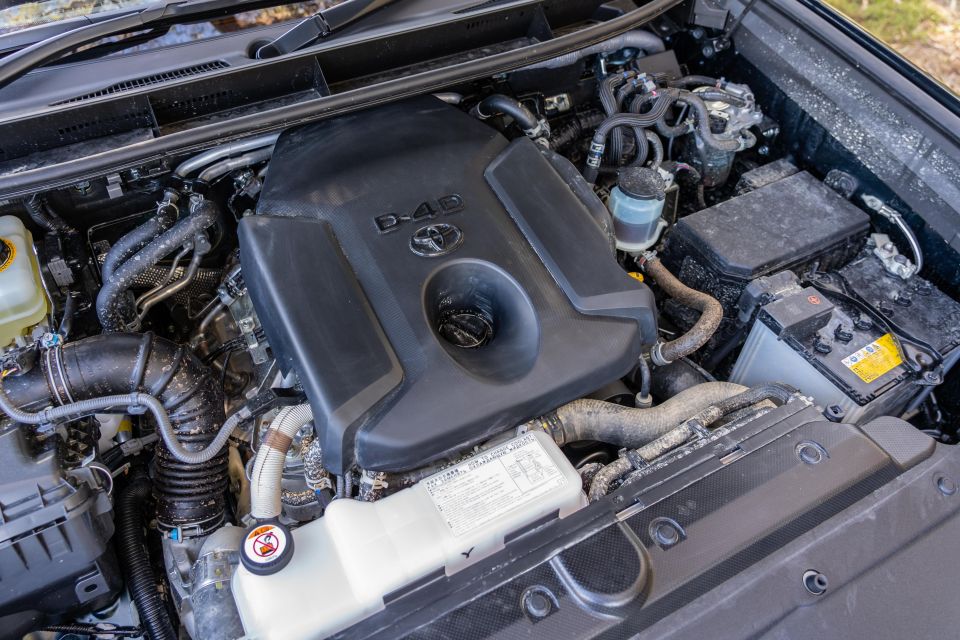
Powering the 2021 Toyota LandCruiser Prado is an updated version of its existing 2.8-litre four-cylinder turbo-diesel engine.
The revised motor produces 150kW of power and 500Nm of torque, and is mated to a six-speed automatic Aisin transmission that sends torque to the ground via a full-time four-wheel drive system.
The added power and torque comes courtesy of a new ball-bearing turbocharger, better cooling, and changes to the cylinder block and head.
It uses a claimed 7.9 litres of fuel per 100km on the combined cycle, though our testing saw closer to 10L/100km over a week of city, highway, and off-road driving.
Toyota claims to have fixed the diesel particulate filter issues that plagued pre-update versions of this engine. The Prado also comes with a manual diesel particulate filter burn switch, which can trigger the burn cycle outside of the system’s preset limits.
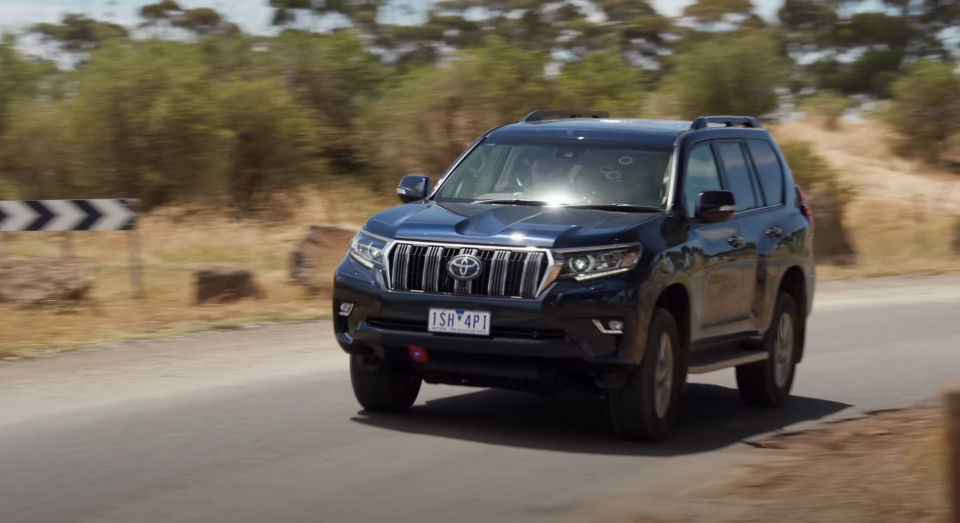
Tipping the scales at 2455kg (kerb), an extra 50Nm of torque was never really going to make a night and day difference.
But, while the updated engine doesn’t pin you back in the seat, it offers something the last Prado struggled with – confidence behind the wheel.
When you sink the boot in now, there’s a quicker and more urgent surge of torque that doesn’t taper off as quickly. It still takes a little over 11 seconds to travel from 0-100km/h, but it’s the mid-range where you will notice the most difference.
Peak torque kicks in from 1600rpm and flows through to 2800rpm meaning there is a wide band the transmission can lean on before needing to shift back through gears. The six-speed automatic transmission isn’t lightning fast on up or downshifts, but that wide torque band accommodates for in-gear acceleration without hunting through gears.
Toyota hasn’t shifted from hydraulic to electrically assisted steering, so you miss out on the variable steering weight you find on most of the Prado’s competitors, along with safety technology like a proper lane-keeping assistant (this uses a system that grabs the brakes momentarily to move the car back into line).

That means the steering can feel a little heavy at low speeds, with the rack retaining a lack of feel about centre at city and highway speeds.
Suspension comes in the form of a double wishbone up front, a four-link setup at the rear, and height-adjustable air springs on the rear axle. There’s also adaptive damping with three suspension settings to match the terrain being driven on, and anti-roll bars on the front and rear axles.
In and around the city the Prado feels smooth and comfortable. It doesn’t feel as brittle or rough as some of the ute-based SUVs at low speeds and that’s thanks to a slightly more sophisticated suspension setup.
Out on the open road and at highway speeds the ride is good, but it can feel a little brittle at times. Corrugations and bumps on country roads at highway speeds tend to translate through the cabin and aren’t adequately isolated by the suspension. It’s certainly not the end of the world, but you will notice it over longer country drives.
Speaking of which, given its reputation, the LandCruiser Prado’s off-road credentials match its rugged appearance.
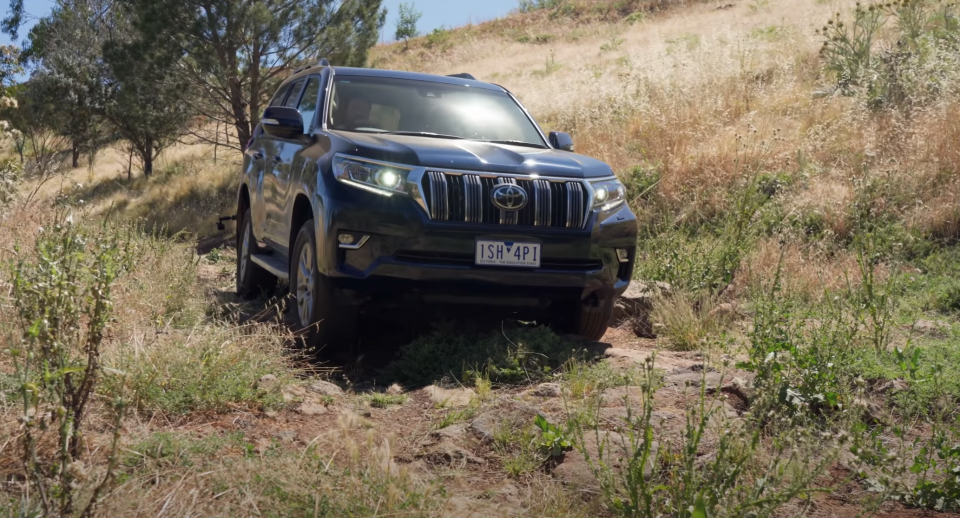
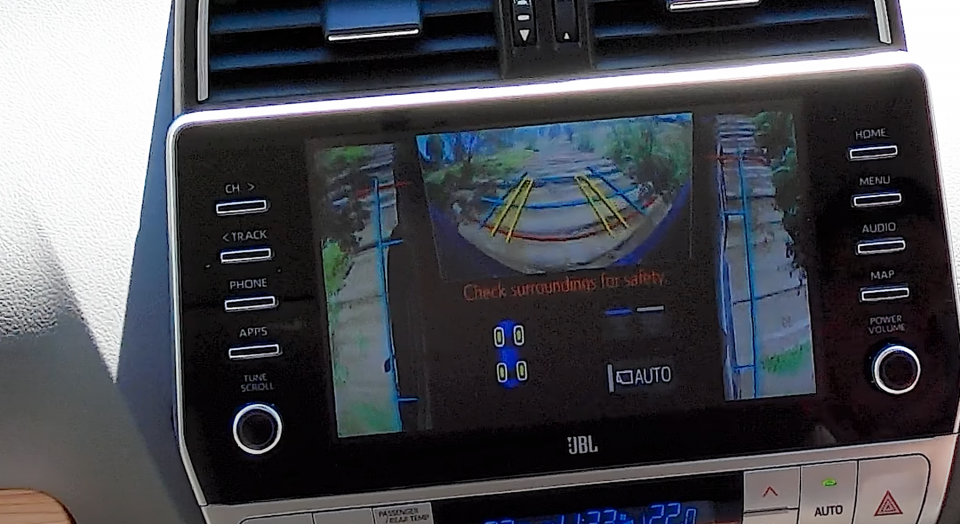
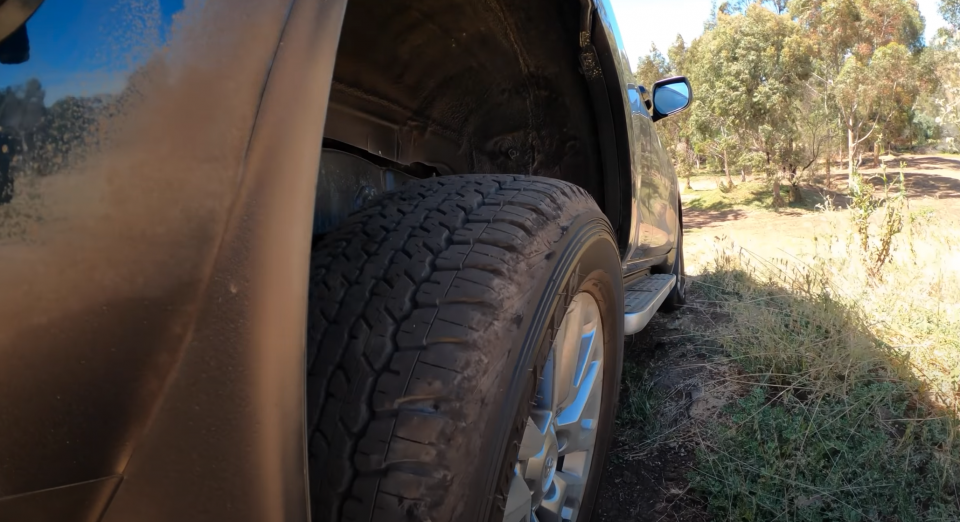
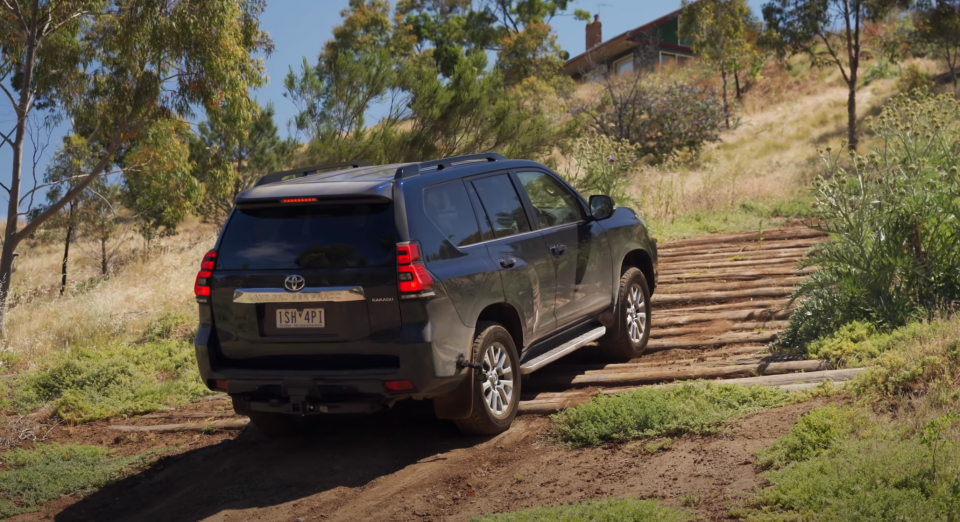
We’re talking about 219mm of ground clearance, 30.4-degree approach angle, 23.5-degree departure angle and a 700mm wading depth, as well as a centre and rear differential lock.
In addition to these systems, the LandCruiser Prado comes with KDSS (Kinetic Dynamic Suspension System), which is a hydraulic decoupler for the anti-roll bars. KDSS activates the anti-roll bars to improve handling on-road, and can disconnect them when extra wheel articulation is required.
There’s also Crawl Control and Multi Terrain Select system. These features help manage off-road terrain by electronically controlling slip at each wheel based on preset speeds and terrain. For the most part they work well, and are there to serve buyers who may not be entirely confident off-road.
The only downsides to the package are the noisy hill descent and Crawl Control modes, and an inability to enter any of the advanced drive modes or engage the rear differential unless the vehicle is in low-range.

The Toyota LandCruiser Prado comes with a five-year, unlimited-kilometre warranty.
While the warranty is impressive, the service schedule and cost could be much better.
The LandCruiser Prado needs to be serviced every six months or 10,000km. Over a five-year period, the total service cost comes in at $3781.82, which is an average of around $378 per service twice a year with some individual services costing almost $1000.
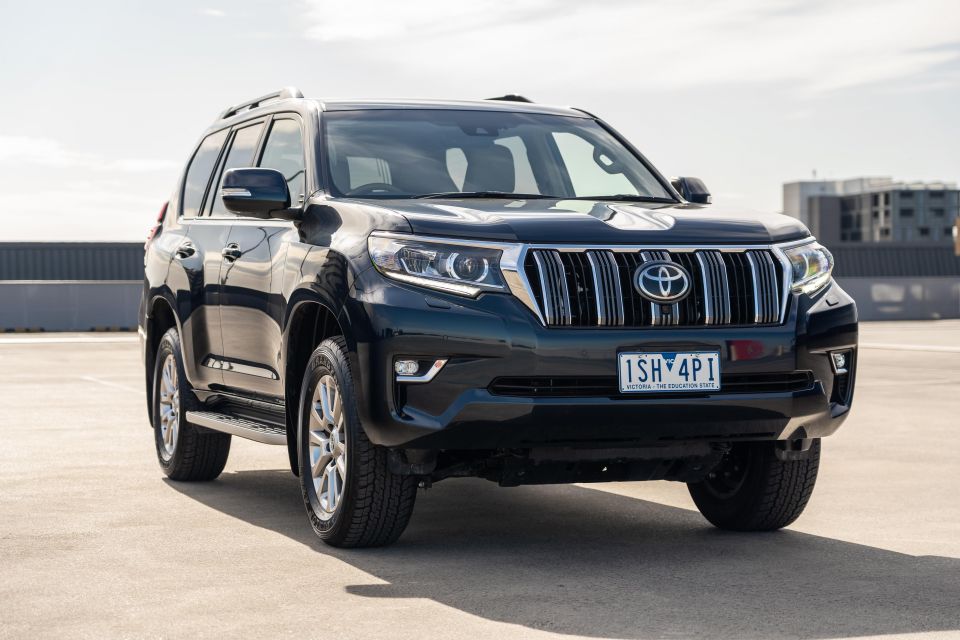
Not a great deal has changed with the LandCruiser Prado. And that’s not a bad thing.
More power and torque is a welcome addition, as is smartphone mirroring. These items simply solidify why you’d buy a Prado if your main mission was to cut a lap of the country or head deep into the bush.
While service intervals are twice yearly and can be expensive, if you do plan to do an extended drive, you have the luxury of Toyota dealers dotted all over the country.
Overall the 2021 Toyota LandCruiser Prado is more of the same and for those wanting a brand new product, we’re expecting a new-generation Prado in 2022 that’s likely to sit on a new platform and come with a range of new engines. You can read more about the 2022 Toyota LandCruiser Prado here.
But in the interim, it’s a safe purchase if you’re upgrading an existing Prado and don’t need any surprises.
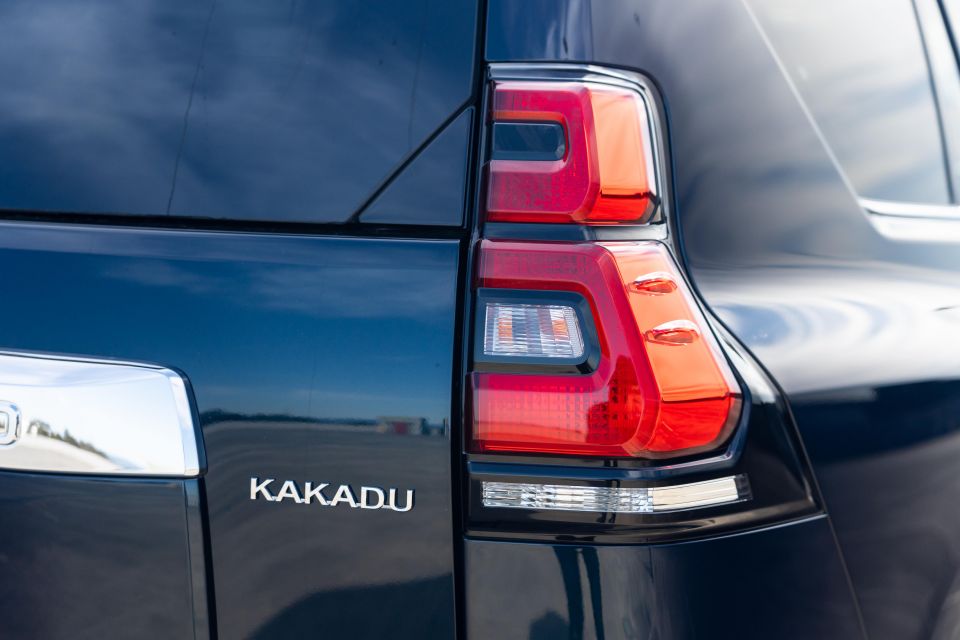
Where expert car reviews meet expert car buying – CarExpert gives you trusted advice, personalised service and real savings on your next new car.
Click the images for the full gallery
MORE: Toyota Prado news and reviews MORE: Everything Toyota
Where expert car reviews meet expert car buying – CarExpert gives you trusted advice, personalised service and real savings on your next new car.
Paul Maric is an Australian car expert based in Melbourne, Australia. Paul is a founder of CarExpert.com.au & formerly part of the CarAdvice founding team.


Max Davies
2 Months Ago


Matt Campbell
1 Month Ago


William Stopford
1 Month Ago
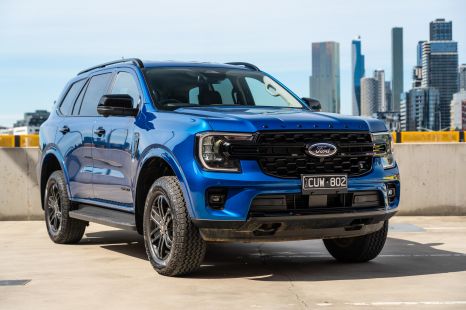

Josh Nevett
1 Month Ago


Max Davies
17 Days Ago


Max Davies
17 Days Ago